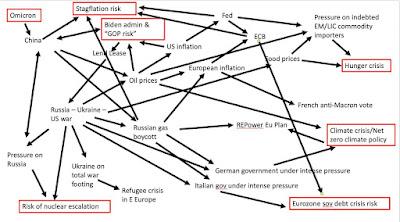
Estamos viviendo los tiempos más duros para la profesión médica española que se han visto jamás. Lo peor no ha sido la pandemia, me temo que lo peor está por llegar. ¿Y qué puede ser más grave que el impacto que el Covid tuvo en nuestra Sanidad?, la respuesta es simple, el hundimiento de la misma.
De igual modo que una casa se construye ladrillo a ladrillo y con tiempo y esfuerzo acaba terminada, en ciertos casos pasa lo contrario. Un edificio se empieza a deteriorar, a perder tejas, a ver vigas torcidas en el techo, a acumular tuberías estropeadas… y al final se derrumba. En esas estamos, con un colapso enfrente de los ojos que nos negamos a ver tratando de fijar la mirada en las paredes que permanecen en pie, que siguen siendo sólidas, mientras la cubierta se ha hecho añicos y en poco tiempo la lluvia y la intemperie terminarán arrasando lo que queda.
¿Qué ha pasado? Sencillamente que no se ha sabido implementar un mantenimiento mínimo. La Ley Nacional de Sanidad de 1986 nos entregó un chalecito nuevo, con algunas carencias eso sí, pero nuevo al fin y al cabo. Una casita moderna que precisaba reformas y refuerzos que nunca llegaron, una estructura que por el servicio que daba sufría una erosión que requería ajustes y flexibilidad. Nadie hizo nada, salvo quizá alguna mano de pintura aquí y allá. Era muy caro a nivel de rentabilidad política y presupuestaria, y no existen políticos que miren más allá de los 4 años vista de rigor. Los profesionales sanitarios que siendo conocedores del sistema lo avisaron no fueron escuchados, ni siquiera cuando con audacia llegaron incluso al despacho del Consejero de Sanidad a lanzar su SOS. No pasó nada. Hasta ahora.
¿Y ahora qué está pasando? Tras la pandemia la estructura sanitaria ha quedado muy tocada, principalmente en Atención Primaria que ya estaba bajo el nivel de flotación antes del Covid. Pasada la pandemia no ha habido ningún refuerzo estructural. Hay algunos planes de mejora pero son papel mojado, que se acumulan en los anaqueles de libros blancos, proyectos y propuestas de una forma insulsa de hacer gerencia que no aporta ni valor ni mejoras. A los hechos me remito. Una forma de justificar el sillón de unos cuadros gestores que no han sido capaces de defender a sus profesionales de la sobrecarga y el colapso. El mantra que esgrimen es “no hay médicos” pero siguen sin reconocer que no los hay por las malas políticas de décadas de maltrato. Los médicos se van y los jóvenes que deberían venir dejan las plazas de medicina de familia desiertas o no acuden a las convocatorias laborales que las Comunidades les ofrecen. Y por si fuera poco en cinco años se jubila el 25% de la plantilla sin que a nadie se le haya ocurrido alguna medida correctora más allá de lanzar un protocolo de asistencia en centro de salud sin médico. Efectivamente ese es el nivel.
Y como veremos las próximas semanas muchos más centros de salud dejarán de ser funcionales (listas de espera de más de una semana, un gran porcentaje de ausencias médicas sin cubrir, o centros sin médico o cerrados), las urgencias hospitalarias colapsarán y las plantas de hospital se llenarán haciendo que terminen colapsando los hospitales (con menos plantas y personal por el verano). Un sistema sanitario que colapsa intermitentemente fuera de una pandemia es un sistema zombi, medio muerto a temporadas, medio vivo en otras. Como fácilmente comprenderán si te pones malo en temporada mala lo tienes chungo.
En esta coyuntura tan compleja y dolorosa para las profesionales muchos se hacen la pregunta ¿qué podemos hacer? Y la respuesta es fácil: respetar la delgada línea roja y no cruzarla. ¿Qué línea roja preguntarán? Pues aquella que establece el límite de su capacidad profesional, un médico de familia no debería ver más pacientes al día de los que pueda. Si la rebasa de forma continuada estará desarrollando una labor insegura para él y para el paciente, peligrosa en muchos casos, tendente al error o a la omisión de algún curso de acción pertinente, favorecedora de enfermarle o quemarle profesionalmente. Y un médico quemado es algo serio para la sociedad. Si no protegemos a la parte más vulnerable de la Sanidad, esta se acabará para siempre.
Como no hay protección externa dado que en los últimos 40 años nadie ha protegido eficazmente a los mismos (ni sindicatos, ni colegios de médicos, ni sociedades científicas, ni organizaciones profesionales) la única posibilidad es que cada cual trace su propia línea y diga NO la cruzaré. Y qué se atreva la Gerencia, el Ministerio o el Sursum corda a obligarle a que vea a más de 50 pacientes al día… La sociedad tiene que saber lo que está pasando con su sanidad y asumirlo o luchar por ello. Si no lo hace no merece la pena que los que están dejándose la piel lo sigan haciendo a este nivel de presión.
No puedo ofrecerles una solución a este dilema. No tengo las claves para arreglar el sistema, aunque pueda intuirlas. Lo que sí tengo claro es la necesidad de visibilizar esta cuestión para que tanto profesionales como sociedad junto a gestores sanitarios y políticos aceptemos lo que hay aunque no pinte bien. El primer paso para tratar una parada cardiaca es reconocerla y pedir ayuda, si nadie da el paso, el paciente se muere. Está pasando.

The thin red line
We are living through the hardest times for the Spanish medical profession that we have ever seen. The worst has not been the pandemic, I am afraid that the worst is yet to come. And what could be more serious than the impact that Covid had on our healthcare system, the answer is simple, the collapse of the same.
Just as a house is built brick by brick and with time and effort it is finished, in certain cases the opposite happens. A building begins to deteriorate, to lose tiles, to see twisted beams in the roof, to accumulate damaged pipes... and in the end it collapses. That's where we are, with a collapse in front of our eyes that we refuse to see, trying to fix our gaze on the walls that remain standing, that are still solid, while the roof has shattered and in a short time the rain and the weather will end up razing what is left.
What has happened? Simply that there has been a failure to implement minimum maintenance. The National Health Act of 1986 gave us a new little house, with some shortcomings, but new nonetheless. A modern little house that needed reforms and reinforcements that never arrived, a structure that, due to the service it provided, suffered an erosion that required adjustments and flexibility. Nobody did anything, except maybe a coat of paint here and there. It was very expensive in terms of political and budgetary profitability, and there are no politicians who look beyond the 4 years of rigor. The health professionals who, being knowledgeable about the system, warned about it, were not listened to, not even when they boldly went to the Health Councilor's office to launch their SOS. Nothing happened. Until now.
And now what is happening? After the pandemic, the health structure has been badly damaged, mainly in Primary Care, which was already at a low level before Covid. After the pandemic there has been no structural reinforcement. There are some plans for improvement, but they are a dead letter, accumulating on the shelves of white papers, projects and proposals of a bland way of doing management that brings neither value nor improvements. I refer to the facts. It is a way of justifying the armchair of managers who have not been able to defend their professionals from overload and collapse. The mantra they wield is "there are no doctors" but they still do not recognize that there are none due to the bad policies of decades of mistreatment. Doctors are leaving and the young people who should be coming leave the family medicine positions vacant or do not attend the job calls that the Communities offer them. And as if that were not enough, in five years 25% of the staff is retiring without anyone having thought of any corrective measure beyond launching a protocol for assistance in health centers without a doctor. Indeed, this is the level.
And as we will see in the coming weeks many more health centers will cease to be functional (waiting lists of more than a week, a large percentage of medical absences without covering, or centers without a doctor or closed), hospital emergency rooms will collapse and hospital floors will fill up, causing hospitals to end up collapsing (with fewer floors and staff due to the summer). A healthcare system that collapses intermittently outside of a pandemic is a zombie system, half dead at times, half alive at others. As you can easily understand, if you get sick in a bad season, you're in trouble.
At this complex and painful juncture for professionals, many ask themselves the question: what can we do? And the answer is easy: respect the thin red line and do not cross it. What red line, you may ask? Well, the one that establishes the limit of their professional capacity: a family physician should not see more patients per day than he/she can. If he/she crosses it continuously, he/she will be performing an unsafe task for him/herself and for the patient, dangerous in many cases, prone to error or to the omission of some pertinent course of action, and likely to make him/her sick or to burn him/her professionally. And a burned physician is a serious matter for society. If we do not protect the most vulnerable part of healthcare, it will end forever.
Since there is no external protection, given that in the last 40 years nobody has effectively protected them (neither trade unions, nor medical associations, nor scientific societies, nor professional organizations), the only possibility is for everyone to draw their own line and say I will NOT cross it. And what would the Management, the Ministry or the Sursum corda dare to force him to see more than 50 patients a day... Society has to know what is happening with its healthcare and assume it or fight for it. If it doesn't it's not worth it for those who are working their butts off to keep doing it at this level of pressure.
I cannot offer you a solution to this dilemma. I do not have the keys to fix the system, although I can intuit them. What is clear to me is the need to make this issue visible so that both professionals and society, together with health managers and politicians, accept what is there, even if it does not look good. The first step to treat a cardiac arrest is to recognise it and ask for help, if no one takes the step, the patient dies. It is happening

薄薄的红线
我们正经历着我们所见过的西班牙医学界最艰难的时期。最糟糕的还不是大流行,我担心最糟糕的还在后面。 还有什么能比科维德对我们的医疗系统的影响更严重呢?答案很简单:我们的医疗系统的崩溃。
就像房子是一砖一瓦建起来的,随着时间和努力,它就会完成,在某些情况下,情况正好相反。一座建筑开始恶化,失去了屋顶的瓦片,看到屋顶上扭曲的横梁,积累了损坏的管道......最后它倒塌了。这就是我们所处的位置,我们的眼前出现了我们拒绝看到的崩溃,试图将我们的目光固定在仍然站立的墙壁上,这些墙壁仍然是坚实的,而屋顶已经被打碎,在很短的时间内,雨水和天气最终将扫除剩下的东西。
发生了什么事?仅仅是未能实施最低限度的维护。1986年的《国家卫生法》给了我们一个新的小房子,有一些缺点,但还是新的。一个现代的小房子,需要改革和加固,而这些改革和加固从未到来,这个结构由于它提供的服务,正在遭受侵蚀,需要调整和灵活。没有人做任何事情,也许只是在这里和那里刷了一层油漆。就政治和预算利润而言,它太昂贵了,而且没有政治家会把目光投向四年的时间框架之外。对这一制度有所了解的卫生专业人员提出了警告,但没有人听他们的意见,甚至当他们大胆地去卫生部长办公室发出求救信号时也没有。什么也没发生。直到现在。
而现在发生了什么?大流行之后,卫生结构受到严重破坏,特别是在初级保健方面,在科维德之前已经处于低谷。在大流行病之后,没有进行结构性的加固。有一些改进计划,但它们都是一纸空文,堆积在白皮书、项目和建议的书架上,是一种平淡无奇的管理形式,既无价值也无改进。我指的是事实。一种为管理干部的扶手椅辩护的方式,他们没有能力保卫他们的专业人员不被超负荷和崩溃。他们的口头禅是 "没有医生",但他们仍然不承认由于几十年的虐待的坏政策而没有医生。医生们正在离开,而应该来的年轻人却让家庭医学的职位空缺,或者不接受各地区提供的工作空缺。如果这还不够,在五年内,25%的劳动力将退休,而除了启动一个没有医生的保健中心的护理协议外,没有人想到任何纠正措施。这的确是一个水平。
而我们将在未来几周看到,更多的健康中心将停止运作(等待名单超过一周,很大比例的医疗缺勤不被覆盖,或中心没有医生或关闭),医院的紧急情况将崩溃,医院的病房将充满,导致医院最终崩溃(由于夏天,病房和工作人员减少)。一个在大流行病之外间歇性崩溃的卫生系统是一个僵尸系统,有时半死不活,有时半活不死。你很容易理解,如果你在一个糟糕的季节生病,你就有麻烦了。
在这个对专业人士来说复杂而痛苦的关头,许多人问自己:我们能做什么?而答案很简单:尊重红色细线,不要越过它。 你可能会问,什么红线?那么,确定其专业能力极限的是:家庭医生每天看的病人不应超过他或她的能力。如果他/她连续越过这个界限,他/她所从事的工作对他/她自己和病人来说都是不安全的,在许多情况下是危险的,容易出错或遗漏相关的行动,并可能使他/她生病或在职业上被烧死。而一个被烧伤的医生对社会来说是一个严重的问题。如果我们不保护医疗保健中最脆弱的部分,它将永远结束。
既然没有外部保护,鉴于在过去的40年里没有人有效地保护他们(既没有工会,也没有医学协会,也没有科学协会,也没有专业组织),唯一的可能性就是每个人都划出自己的界限,说不,我不会越过它。如果管理层、卫生部或Sursum corda敢于强迫他每天看50个以上的病人......社会必须知道其医疗系统正在发生什么,并接受它或为它而战。如果不这样做,对于那些正在拼命工作的人来说,在这种程度的压力下继续这样做是不值得的。
我无法为你提供解决这一困境的办法。我没有修复系统的钥匙,尽管我可以凭直觉判断。对我来说,清楚的是需要让这个问题变得明显,以便专业人员和社会,以及卫生管理人员和政治家都能接受现有的东西,即使它看起来并不美好。治疗心脏骤停的第一步是认识到它并请求帮助,如果没有人采取这一步,病人就会死亡。它正在发生。
